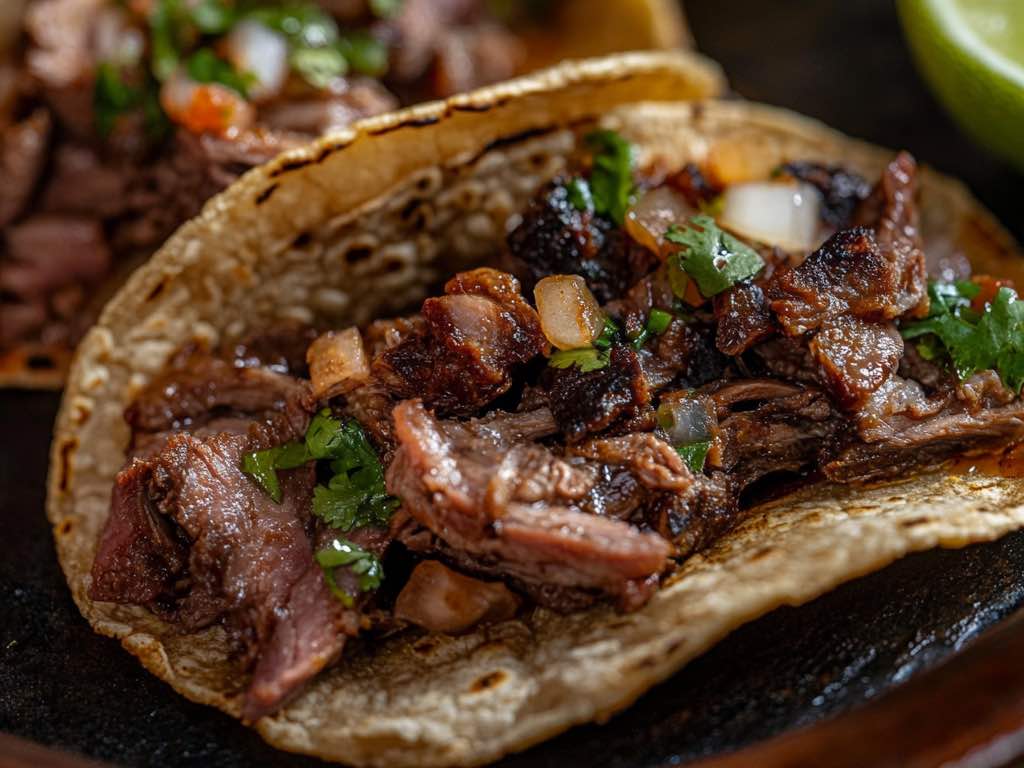
Tacos de Barbacoa: A Tender Tradition Wrapped in Flavor
|
|
Time to read 5 min
Welcome to One Stop Halal!
Written by: Samir P.
|
|
Time to read 5 min
There’s something magical about biting into a taco de barbacoa. The soft corn tortilla cradling slow-cooked, tender, and flavorful meat—often lamb, beef, or goat—is a culinary experience rooted in centuries of tradition. More than just street food, tacos de barbacoa are a celebration of heritage, patience, and regional pride. In this blog, we’ll take a deep dive into the origins, preparation methods, regional variations, and how to make your own tacos de barbacoa at home.
The word "barbacoa" has Indigenous origins, believed to be derived from the Taíno word "barabicu," meaning "sacred fire pit." Spanish colonists adopted the term and cooking technique, which involves slow-cooking meat over a fire or in an underground pit. In Mexico, this method was refined by the Indigenous peoples—especially in central states like Hidalgo, Tlaxcala, and Puebla—into what we now know as barbacoa.
Traditionally, a whole animal (commonly lamb or goat) is wrapped in maguey (agave) leaves and cooked in a pit lined with hot stones, sealed with earth, and slow-roasted overnight. This method infuses the meat with smoky, earthy, and succulent flavors that no oven can truly replicate.
A taco de barbacoa is more than just meat and tortilla—it's an experience. Each component plays a vital role:
Just like Mexico's diverse geography, barbacoa varies by region:
Hidalgo is often considered the spiritual home of traditional lamb barbacoa. Cooked in underground pits with maguey leaves, the resulting meat is fall-apart tender and served with consomé—a broth made from the drippings of the meat, often served as a starter or poured into the taco for extra flavor.
In states like Nuevo León and Coahuila, beef is king. Often made with cheek meat (cachete) or brisket, northern barbacoa is typically steamed or cooked in large pots and has a bolder, beefier profile.
In western states like Jalisco, goat meat is used in a spicy broth to make birria, another slow-cooked delicacy often served as tacos. Though technically distinct, birria and barbacoa share similar roots.
No barbacoa experience is complete without consomé—a rich broth made from the cooking juices of the meat. It’s often sipped between bites or spooned into tacos. Add a few diced onions, chopped cilantro, and a splash of lime juice for the ultimate comfort drink.
While tacos are the most popular way to enjoy barbacoa, the meat is incredibly versatile. Here are some other traditional (and creative) ways to use it:
In many Mexican communities, barbacoa isn’t an everyday food—it’s a weekend or special occasion dish tied to family gatherings, religious celebrations, and communal traditions. In rural areas, the tradition of preparing the pit, wrapping the meat in agave leaves, and sharing it with the community remains alive today.
For immigrants in the U.S. and beyond, barbacoa serves as a nostalgic dish that connects them with their roots. You’ll often find local taquerías selling tacos de barbacoa only on weekends, mirroring traditions from home.
Welcome to your favorite Butcher Shop. We carry various meat cuts that are hard to find elsewhere. We deliver to your doorstep anywhere in the United States within 1-2 business days.
Tacos de barbacoa embody everything beautiful about Mexican cuisine—rich history, layered flavors, and a profound sense of place. Whether you’re enjoying traditional lamb barbacoa from an underground pit in Hidalgo or making beef barbacoa in your slow cooker at home, the essence remains the same: soulful, slow-cooked meat transformed into a taco that tells a story. So next time you’re craving something hearty, flavorful, and steeped in culture, remember tacos de barbacoa. It’s not just food—it’s a celebration wrapped in a tortilla.

© 2025 One Stop Halal, Inc.